Sean Knox
Spring in Maryland has been a season of unexpected contrasts. Warmer days are gradually replacing the chill of winter, yet many people still choose to remain inside or stay close to home. Frequent rains have returned vivid colors and a sense of vitality to the natural landscapes around us, but traditionally bustling businesses and social gathering spaces remain quiet and subdued.
This dichotomy serves as a reminder of just how heavily COVID-19 has impacted our society. While there are those who still protest against the ongoing stay-at-home and social distancing measures advised by the state, millions of Marylanders have heeded the orders in the hopes of flattening the curve and keeping hospitals with limited supplies or testing capabilities from being overwhelmed by coronavirus patients.
While adhering to state and CDC-recommended guidelines has kept infection rates lower than they otherwise would be, these safety guidelines come with their own costs.
By now, most people following COVID-19 prevention guidelines know that staying at home and avoiding close contact with other people can often lead to a challenging combination of anxiety, frustration, and restlessness.
In order to combat this, people have found creative ways to relieve the stress and uncertainty caused by coronavirus. While video calls and online concerts can provide important elements of connection, staying at home can still be an isolating experience. To weather the stress of the pandemic, some are relying on another method: birding.
Birding, or birdwatching, focuses on observing and identifying bird species by sight or by sound. Some people do it competitively, engaging in ‘big year’ birding contests and creating ‘life lists’ of all the species they’ve seen. Others do it to contribute to ongoing scientific research studies. Many do it simply for the fun and relaxation it provides.
“I think birding is an incredible way to get out and experience nature,” said Harrison Jackson, the Education and Outreach Specialist with Pickering Creek Audubon Center, located on Maryland’s Eastern Shore.
Though the education and public programming work done by Pickering Creek has shifted to an online distance-based format, Jackson still makes it a priority to get outside and go birding when time allows. For him, birding provides both a sense of connection and a reminder that there’s more to the world beyond the current COVID-19 crisis.
“There’s an osprey nest that I pass every time I go for a walk, and being able to see the nest and see the parents coming back with sticks…it’s just a sign of spring, and it helps to anchor me and anchor a lot of people, to know that there are so many crazy things in the world right now, but that nature is still going to continue to do what it does,” said Jackson.
One advantage to birding is that it has such a low barrier to entry: it can be done almost anywhere by anyone. Although they sometimes go unnoticed, birds are everywhere: they can be seen and heard throughout cities, suburbs, and rural areas. In any given location, a varying number of species can be found depending on habitat conditions and the time of year.
Beginning to learn about birds can be as simple as opening up Google on a laptop or smartphone. Organizations like the Cornell Lab of Ornithology and the National Audubon Society maintain dedicated websites that provide detailed information and lessons about the appearances, calls, and life histories of the more than 400 bird species that can be found in Maryland.
To start observing birds in your area, take a stroll through your neighborhood, or sit by an open window or out on a front step, watching and listening for local birds to make themselves known. While some birders get excited about expensive equipment, that can come later.
“Everyone thinks about birders and bird nerds and thinks you need these crazy high-powered binoculars or scopes to see really good birds,” said Jackson. “Certainly they can help, but by staying still and staying quiet out in your backyard or near your window, you can see a lot of birds with just your naked eye.”
Although birding provides an opportunity to engage with nature and escape the monotony of life indoors, birding during the COVID-19 pandemic means being cautious and making adjustments in order to stay safe.
While well-known public parks often double as well-known birding hotspots, they can often become riskier locations these days, as too many people cram into still-open locations. At particularly busy sites, social distancing measures are sometimes ignored.
“I went to Susquehanna State Park on Saturday, and it was so crowded,” said Martin Brazeau, an academic advisor at the Community College of Baltimore County.
Brazeau, who is also the instructor of a birdwatching course offered by the college, was out filming birds as part of a series of bird identification videos he’s posting to his YouTube channel. The videos give Brazeau an extra way to share his passion for both birds and birding, but recent public crowds may force him to rethink his filming locations.
“I think for now I’m going to veer away from popular parks on the weekend and just try to stay in lesser-known parks,” said Brazeau.
Along with avoiding potentially crowded locations, it’s important to maintain the social distancing protocols established by the state of Maryland and the CDC. If choosing to go outside, birders should ideally stay relatively close to home, minimize travel, and stay at least six feet away from other people.
For many birders, social distancing means refocusing efforts on areas closer to home.
For Maryland-DC Breeding Bird Atlas coordinator Gabriel Foley, COVID-19 has meant giving up traveling to see different habitats or rare bird sightings in favor of focusing on a mile-long path close to home.
“I’ve stuck strictly to this little patch, so I’m definitely feeling a little bit of cabin fever, but at the same time it’s nice to really pay attention to what’s happening in such a small local area,” said Foley.
The Atlas, which will run from 2020 – 2024, is currently in its third iteration, with previous studies conducted in the 1980s and the early 2000s. With information collected entirely by volunteers, the goal of the Atlas is to document and describe the what, where, and when of breeding bird populations in Maryland and the District of Columbia.
To Foley, the Atlas provides an exciting way to get involved with birding while also contributing to an important citizen science project.
Volunteers can bird as much or as little as they want, even if it’s only the area immediately surrounding their home. Observations are entered in on popular birding website eBird, using a special Maryland-DC Breeding Bird Atlas Portal link that can be found with a quick search on Google.
While birding for the Atlas, volunteers scan the area for signs of breeding bird species, including singing, male-female pairs, and the sight of individual birds carrying nesting material.
“It gives you even more to look for, because you’re focused so much on the individual bird’s behavior,” said Foley.
Not only does birding allow people to learn about the natural world and the birds living just outside their door, but it also provides a way for people to connect and bond with one another.
Birders constantly post updates to eBird, allowing other interested birders to get a sense of which bird species are in the area, and social media websites like Facebook, Twitter, and Instagram are full of local and global birding communities eager to share photos and stories. That sense of belonging and togetherness is especially important in the face of the ongoing pandemic.
“It helps me to feel less alone, and I think it helps a lot of people to kind of realize that we’re all going through this together,” said Jackson. “But nature has an incredible way to heal people, and I think that that’s something birding can really help with.”


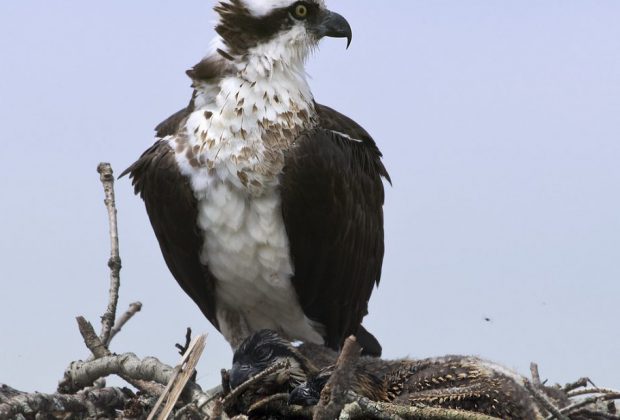



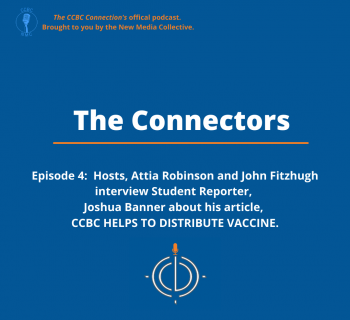




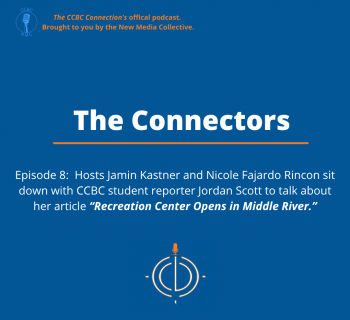
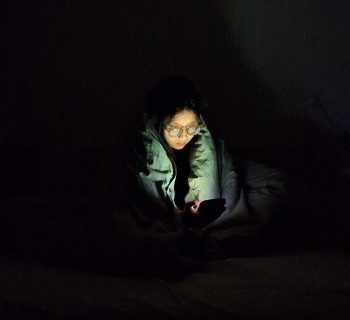
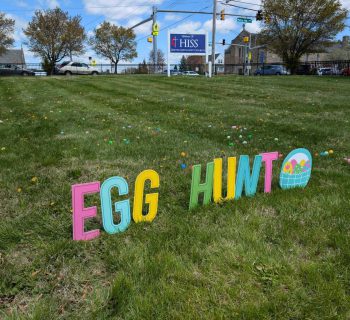

I never knew there were so many different species of birds in Maryland, I’ve always wanted to try birding and this might be the thing that’ll finally make me actually go out and do it
I have to say, I enjoyed this article. I personally have been dealing with anxiety most of my life. Recently it has been much harder to manage, especially whilst in quarantine. There’s a constant fear of getting sick or getting my family suck if I hangout with anyone. However, I do sit out back and look up at the sky. Just this week I saw a blue Jay and a Cardinal. I felt at peace momentarily. I agree more people should do this.
This is a really nice post. I think I am going to start boarding myself. It is really fascinating
This is a really nice post. I think I am going to start birding myself. It is really fascinating
I really love this! I don’t know a lot about birds and don’t notice them as much. However, it’s almost meditative to just sit and search for the birds in trees, I can see how this would help people who have been struggling with anxiety and cabin fever from quarantine.
Covid got me back out in nature over the spring too. It’s just nice to get out of the house let alone surround yourself with the beauty and vividness of nature. Especially as color was starting to come back to the trees. I hope you are doing well and continuing to discover Sean!
This was a very interesting and well-informed article. I know I could use more ideas on what to do what to do with all my extra time. I think this is very creative. Nicely written.
I find it funny that even in the mist of the rising situation (pandemic) and throughout the rest of the summer I found myself more in nature than ever before. I know for a fact it has more to do about becoming more spiritually aware of life, but this article grabbed my attention because i absolutely love birds! Bird watching brings me joy and peace. I have learned a lot about different birds from my spiritual journey and they have guided me to living life freely even when the world is panicking about covid 19. I do hope more people take this advice because being in nature is what we all need in order to get connected with the earth to truly understand what is happening right now.
This was a great article. I don’t really pay attention to birds that often but now I can understand why they can be so fascinating. I agree that this quarantine can lead to anxiety from being cooped up in the house all day. I think bird watching can be a unique hobby as it allows you to learn all the different kinds of birds that exist and pay more closely to them too.
This was a great article. I don’t really pay attention to birds that often but now I can understand why they can be so fascinating. I agree that this quarantine can lead to anxiety from being cooped up in the house all day. I think bird watching can be a unique hobby as it allows you to learn all the different kinds of birds that exist and pay more closely to them too.
This article evokes a really nice sentiment to me. I feel like picking up a hobby or a new interest is the only way forward. I will admit that I don’t have much exposure in the birding community, but this was definitely a nice primer. The correlation between brand logos and the message they’re sending was one that I never took the time to think about myself.